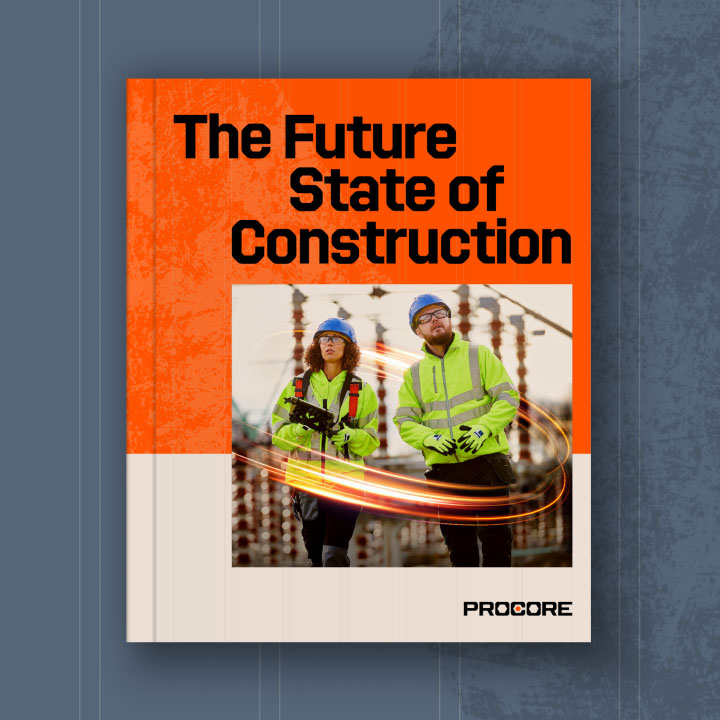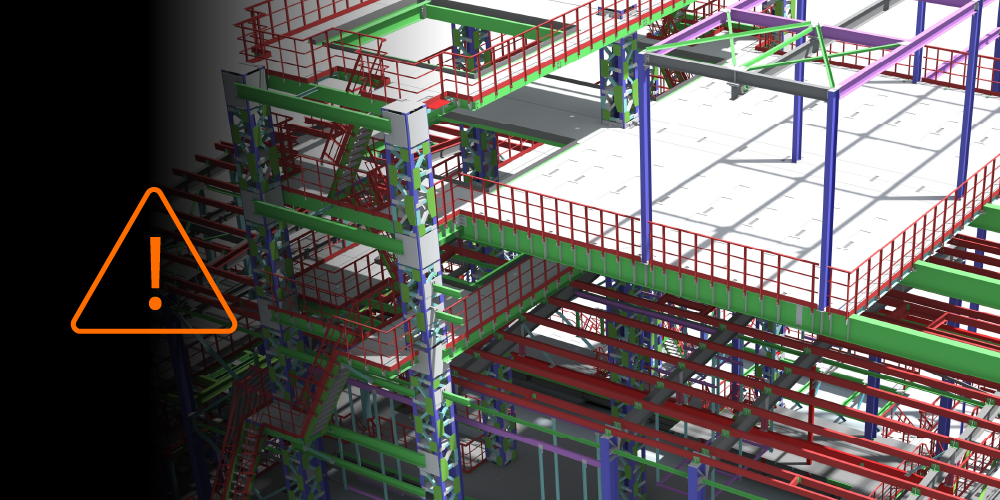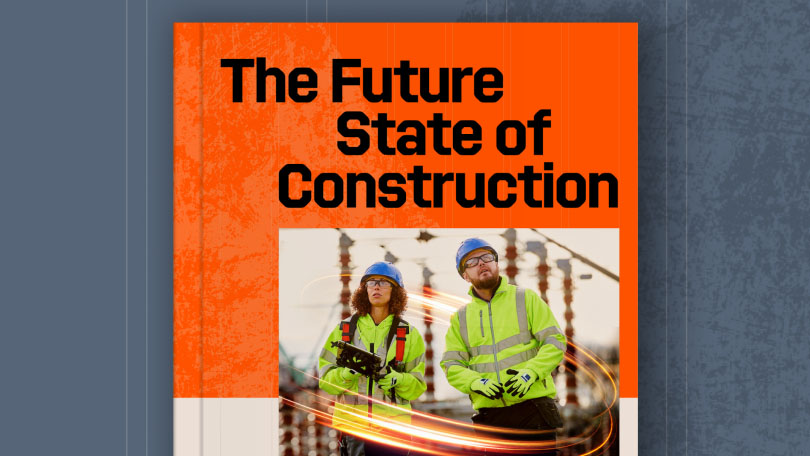Related Articles
— 4 min read
Ctrl + Build: Built for Trust – Why Cybersecurity Matters Before the Data Centre Slab is Poured

Last Updated Sep 10, 2025

Paul Acker
As a Strategic Product Consultant at Procore, Paul Acker boosts construction financials through expert Procore implementation and ERP integrations. He translates complex technical and financial problems into practical solutions, improving cash flow, reporting, and project margins for construction firms, developers, and subcontractors. Paul's blend of construction management, financial optimisation, and an MBA - backed by success leading multi-billion dollar system and data migrations - ensures technology delivers tangible commercial results and drives efficiency.
Last Updated Sep 10, 2025

Data centre operators don’t just build for performance. They also build for trust. With sensitive data at stake, many operators mandate ISO 27001-compliant platforms from Day One. But what does that mean for builders? And why is the construction phase a cyber risk in itself?
Table of contents
Security Starts with Site Data
Think of data centre security, and most people will picture locked racks, biometric scanners or AI-powered anomaly detection.
But security should begin long before the first server powers up – in the construction phase.
Design blueprints, network diagrams, commissioning sequences and site plans pass through dozens of hands: contractors, consultants, client-side teams. For data centre owners, this isn’t paperwork. It’s high-value and often highly vulnerable intelligence.
If documents aren’t secure, neither is the facility. That’s why security doesn’t start with operations. It starts with information and how it’s handled during design and delivery.
Paul Acker
Cyber Threats are On the Rise
Asia Pacific is now the most targeted region on the planet for cyberattacks – and the risks are growing every day.
Cybersecurity hotline calls jumped 12% in FY24, with the Australian Signals Directorate fielding more than 36,700 calls – or around 100 a day. What’s more, 11% of incidents affected critical infrastructure, including data centres.
In 2024, the Asia Pacific region recorded over 51 billion attacks on web applications and software integration points — up 76% in a single year, according to cybersecurity expert Akamai.
These attacks often target the “digital plumbing”, known as application programming interface (APIs), that connect software systems.
For constructors and their teams, this means the platforms used to manage drawings, workflows and documents are increasingly part of the risk landscape.
An Expanding Attack Surface
Asia Pacific’s biggest targets for web and API attacks in 2024
- Australia: 20.3 billion
- India: 17.3 billion
- Singapore: 15.9 billion
- Japan: 6.3 billion
- China: 6.2 billion
- South Korea: 4.9 billion
- New Zealand: 2.9 billion
- Hong Kong SAR: 2.2 billion.
Source: Akamai, 2025.
Why ISO 27001 is the Gold Standard
ISO/IEC 27001 is the global benchmark for managing information security. It sets out a clear, auditable framework to help companies identify risks, protect data and continuously improve security systems.
For data centre owners, ISO 27001 is more than best practice. It’s a baseline.
The tech titans are all ISO 27001 certified – and, increasingly, they expect their partners to be too. Many data centre operators now mandate compliance from every builder, subcontractor and platform provider involved in delivery.
Procore is ISO 27001 certified, giving owners confidence their construction data is managed in line with the most rigorous international security standards.
Builders vs. Owners: The Perception Gap
Most builders see cybersecurity as an operational issue for owners. But owners know their risk doesn’t start at go-live. It starts the moment designs are shared.
In the construction sector, poor document control, unsecured file sharing and outdated tools create easy entry points for attackers. On a data centre project, a single lapse can put sensitive systems at risk.
From a tendering perspective, ISO 27001 is not about ticking a box. It’s about access to projects.
Table 1: Cyber Threats in Construction
| Threat | Definition | Example |
|---|---|---|
| Ransomware | Malicious software that locks data for ransom | A single attack freezes site drawings and schedules, halting work across teams. |
| Phishing | Fake emails that trick staff into revealing credentials | A fake invoice from a known supplier exposes project budgets and plans. |
| Data breaches | Unauthorised access to sensitive information | Leaked contracts, specs or personal info damages client trust. |
| Man-in-the-middle attacks | Intercepted communication between two parties | An attacker reroutes a subcontractor’s invoice, redirecting payments. |
| Supply chain attacks | Targeting weaker links to infiltrate stronger networks | A small subcontractor’s login credentials unlock access to entire project systems. |
Supply Chain Shared, Risk Shared
Data centre builders don’t just manage their own systems. They inherit risk from every consultant, subcontractor and platform connected to the project. When it comes to cyber threats, every link in the chain matters.
In 2024, the Australian Signals Directorate updated its advice on managing cyber supply chain risk. It urges all organisations, especially those managing critical infrastructure, to:
- Set clear cybersecurity expectations with suppliers
- Conduct audits and technical assessments to verify compliance
- Mandate transparency around incidents affecting delivery partners
- Avoid suppliers with poor security track records.
What does this mean for the construction industry? If you want to win data centre work, it’s not just your systems under scrutiny. It’s your whole process, and the platform you build it on.
“Procore’s ISO 27001 certification doesn’t just protect our own systems. On high-stakes projects like data centres, owners need confidence that their platforms and their partners are built for security.”
Paul Acker
What a Secure Construction Platform Looks Like
A secure platform means more than secure logins. It means every document, drawing and defect log is encrypted and access-controlled to international standards.
A secure platform gives data centre project teams confidence that:
- Critical documents aren’t shared through unsecured drives or inboxes
- Subcontractors access only what they need
- Full digital audit trails support compliance at handover
- Project data is protected as teams change and roles evolve.
Read: The Data Centre Balancing Act - Why Commissioning Risk is the Biggest Blind Spot in Today’s Builds
See what’s coming in construction over the next decade.
Download the Future State of Construction Report for insights, trends, and innovations shaping the industry over the next 8–10 years.

this is part of the series
Ctrl + Build
Categories:
Written by

Paul Acker
As a Strategic Product Consultant at Procore, Paul Acker boosts construction financials through expert Procore implementation and ERP integrations. He translates complex technical and financial problems into practical solutions, improving cash flow, reporting, and project margins for construction firms, developers, and subcontractors. Paul's blend of construction management, financial optimisation, and an MBA - backed by success leading multi-billion dollar system and data migrations - ensures technology delivers tangible commercial results and drives efficiency.
View profileExplore more helpful resources

Managing Direct Costs in Construction: How Visibility Drives Profitability
Direct costs define the financial reality of every construction project. They cover the labour, materials, and equipment that drive delivery and determine profitability. But even the best-planned budgets can shift...

BIM Clash Detection: Reducing Rework, Delays, and Risk in Construction
Design clashes can be a significant hidden cost in construction, as each conflict between systems risks expensive rework, project delays, and reduced margins. BIM clash detection empowers teams to identify...

Next-Gen Job-Costing: Ready to Move? 5 Things to Consider Before You Get Started
In this three-part series, Quantity Surveyor turned Financial Solutions Specialist Clint Burgess uncovers the real-world gains for people, processes, and profits when businesses move from legacy to next-generation Enterprise Resource...

From Workarounds to Workflow: Solving Construction’s Legacy Job-Costing System Challenges with Next-Gen Tools
In this three-part series, Quantity Surveyor turned Financial Solutions Specialist Clint Burgess uncovers the real-world gains for people, processes, and profits when businesses move from legacy to next-generation Enterprise Resource...
